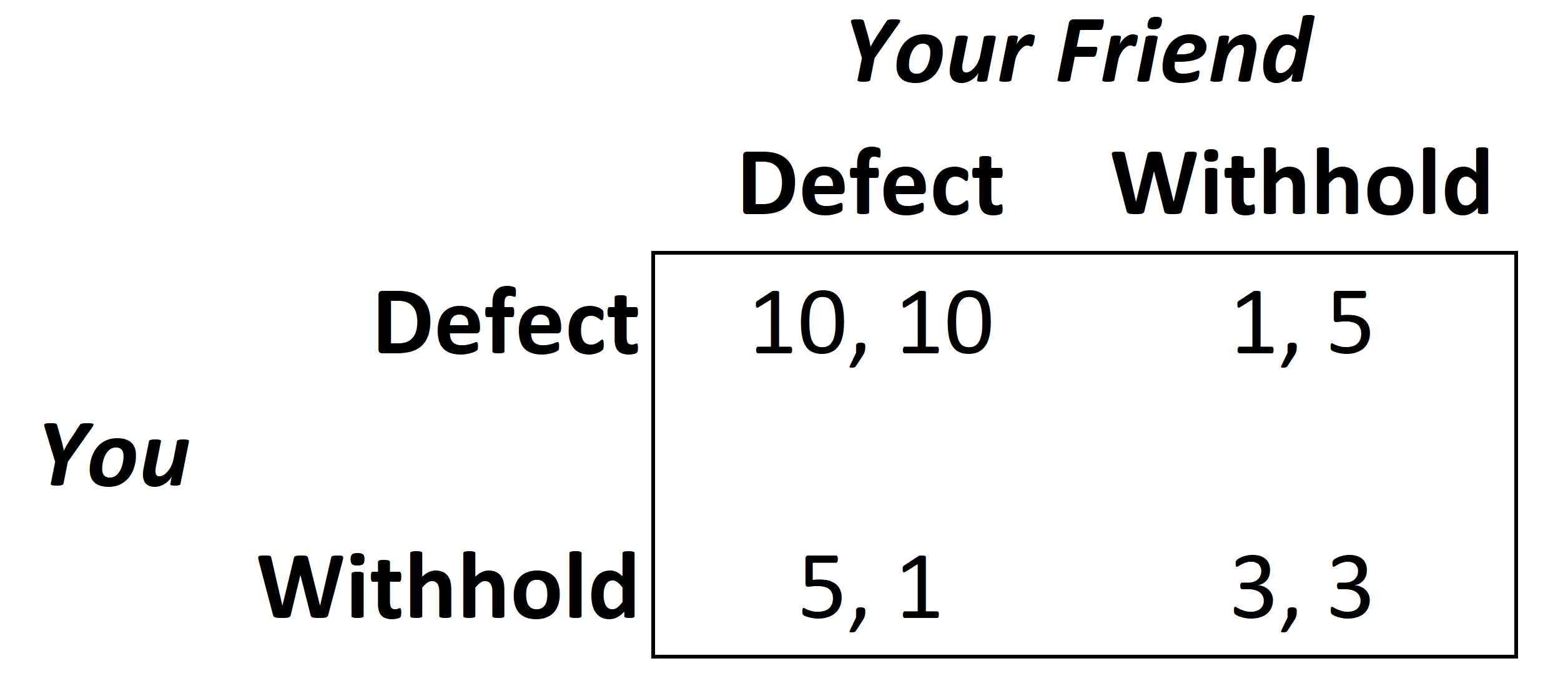You and your friend have committed a murder. A few days later, the cops pick the two of you up and put you in two separate interrogation rooms such that you have no communication with each other. You think your life is over, but the police offer up a deal:
Rat your friend out, and your sentence will be lighter.
The catch is that your friend is offered this deal, too.
More specifically, if you rat your friend out but your friend says nothing, they get a heavy sentence and you get a light one. If you rat each other out, there’s a heavy penalty for both. If both of you stay silent, the sentences are light for you and your friend.
The decisions must be made without communicating with each other, and both you and your friend only have two choices: “defect” and rat them out, or “withhold” information from the cops and stay silent.
Take a look at the following diagram that describes your choices and sentences:

A punishment diagram for you and your friend.
The matrix describes the number of years the two of you get depending on what you and your friend independently choose to do. The first number represents your prison time and the second represents your friend’s.
For example, if you withhold information from the cops, but your friend chooses to rat you out, you get five years in a maximum-security prison but your friend only gets one.
What would you do in this situation?
What should you do in this situation?
There’s no easy solution to this problem and there are a lot of interpretations to this. A utilitarian might say withholding is the better option because it minimizes the total number of years either person spends in prison (5 + 1 or 3 + 3 as opposed to 10 + 10). What does probability say?
#crime #game-theory #simulation #data-visualization #data-science
